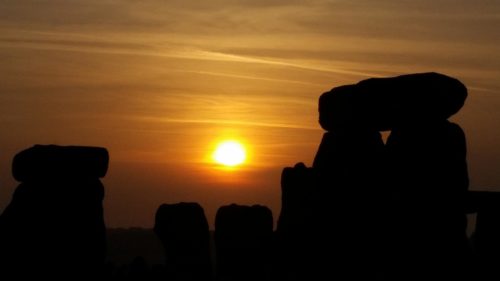Although the Summer Solstice is considered to be a “day” it is specifically a moment in time where the earth is most tilted towards the sun. It also marks the longest day, and the shortest night, of the year.
This year, in the Northern Hemisphere of the Earth, the Summer Solstice will occur on Tuesday 21 June at 15:57pm BST.
The Astronomy behind the solstice.
Our Earth rotates once each day, producing day and night.
At the same time, the Earth also moves around the Sun on its orbit over the course of a year.
The axis of the Earth is tilted slightly at around 23°, and this tilt means that for half the year, the North of the year is tilted towards the sun, while the South is tilted away. For the next 6 months, the opposite occurs, and the Southern Hemisphere is tilted towards the sun.
At the exact moment that the northern hemisphere is most tilted towards the Sun, the northern hemisphere experiences its summer solstice. The southern hemisphere, by contrast, has its winter solstice.
These key points in the year help to determine the seasons on Earth.

Stonehenge – Solstice Celebrations
The ancient monument of Stonehenge in thr UK has for some time been the centre of a celebration of the solstice.
This comes from the fact the stones are lined up to frame the rising of the Sun on the solstice. The stones also mark the position of sunset on the winter solstice.
Due to this, many many modern day religions gather at the site to mark the occasion: it is also one of the rare times visitors are allowed to walk right up to the stones themselves.


